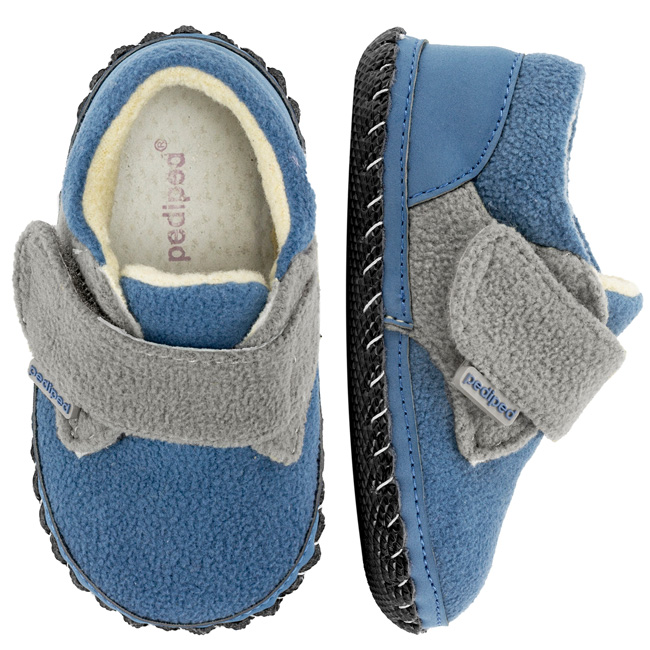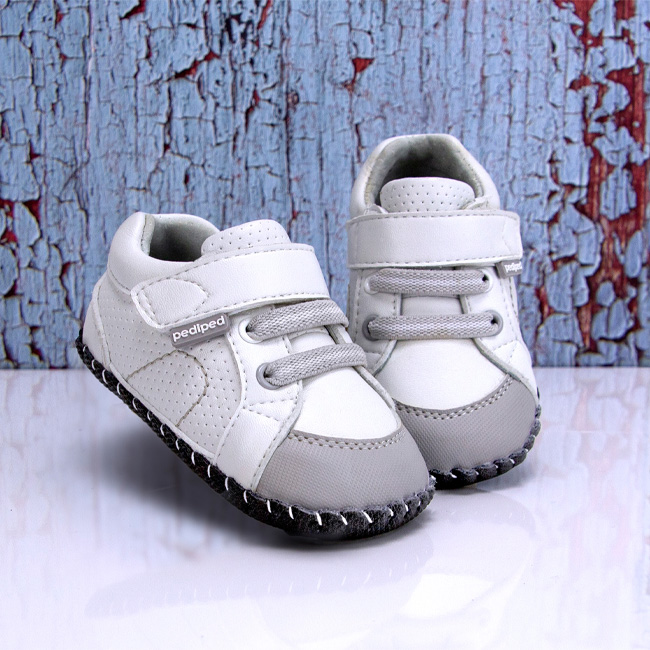I know that our little babe will be walking before we know it and with that in mind, we started to do a little research of what baby shoes would be the best for learning to walk. Everything that I’ve read and heard from doctors is that bare feet are perfect for learning to walk, but you need something to cover those feet when you’re not at home! I wanted something that was going to mimic bare feet, if that something even existed!
When I came across pediped, I felt like I’d found a winner. Although function is important (and it should be) they had so many cute styles to choose from that made me like them even more. Their website also provided me with a ton of information on how to fit baby for first shoes, too. I found it so helpful that I wanted to share the info with you here!
What To Look For With First Baby Shoes
When looking for first baby shoes, try to look for shoes with soft, flexible soles, and large roomy toe box. I really like pediped Originals because they combine soft leather sole, with soft leather lining and uppers to create the most comfortable crib shoe that will take baby from crawling, to walking and then to running (and let’s face it…that will be a reality before we know it!).
Made with soft leather, they are ideal for indoor and outdoor environments. The soft cushion beneath their feet most mimics barefoot walking while providing enough protection for their feet.
How To Fit Baby For Shoes
First, you want to check if the shoe is comfortable. Bend the shoe at the ball and see if it flexes easily. Next, look at the materials and construction. is it breathable, is it made of leather or a breathable fabric? These are positive feature for first baby shoes. Try to avoid shoes that are stiff, with a hard rubber sole, or made of materials that are not breathable such as synthetics or plastics. It causes baby’s feet to sweat and it also may change the gait on the baby if the shoe is hard.
When children are learning to walk, they like to grip and feel the floor. They also hold on to things and tend to shuffle. Shoes with no hard edges or soles will allow them to easily feel the ground and will not affect their gait. If you do all these things, you are well on your way for promoting healthy foot development for your little one!
I’m not a specialist in this regard in any way, so I encourage you to visit pediped.com for more information about foot development and choosing the proper shoes for your child.









